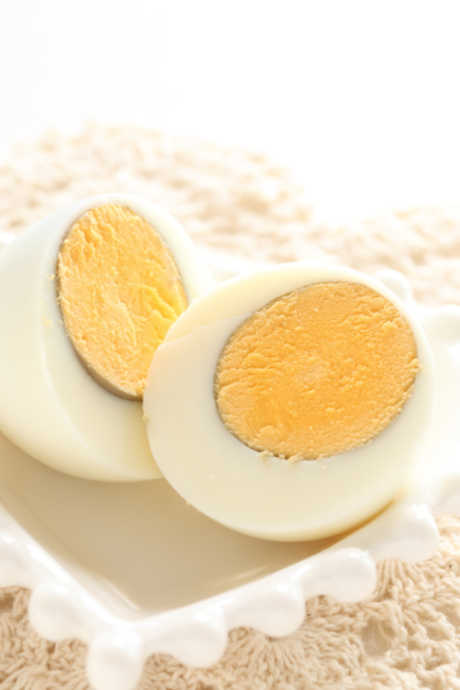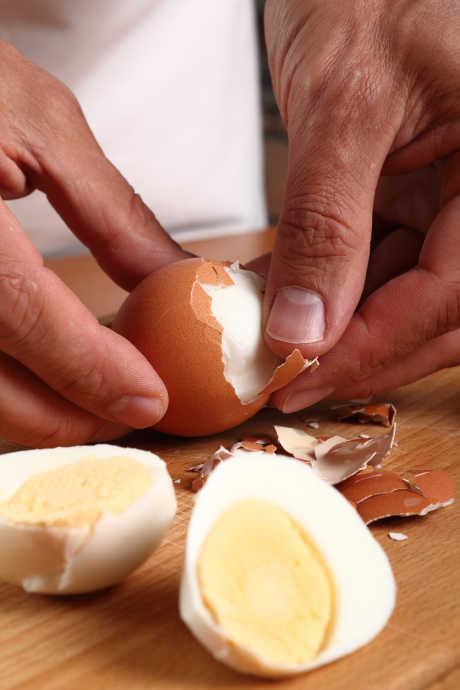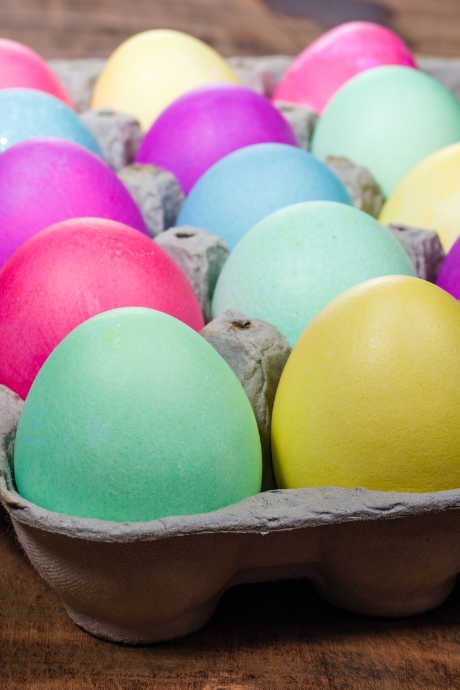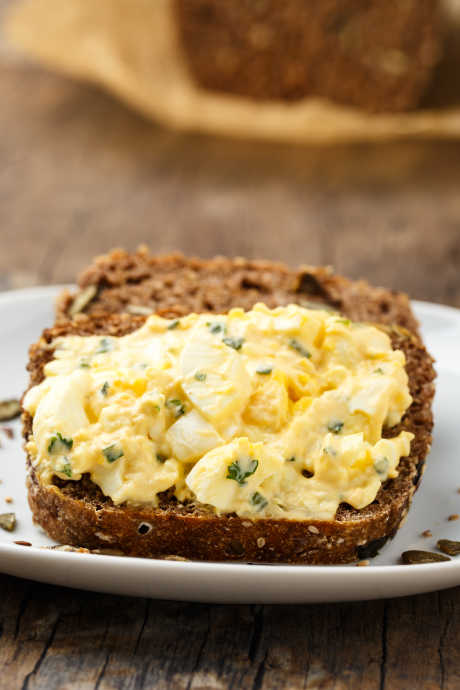Hard Boiled Eggs Made Easy
Posted by Julie on Apr 8th 2019
It’s always helpful to know how to hard boil an egg. While it seems as if boiling eggs ought to be nearly as intuitive as boiling water, that’s not the case. Anyone who’s ever struggled to peel an egg only to lose several chunks of white and find a discolored yolk at the center knows that making a hard boiled egg isn’t as easy as it sounds.
Whether you’ll dye your hard boiled eggs bright colors, place them on seder plates, or enjoy them outside the scope of the Easter and Passover holidays, we’re here to help them turn out well. From key tips and tricks to food safety concerns, and even a few recipes we’re excited to try, get ready to learn about hard boiled eggs.
3 Key Tips for Boiling Eggs
In our research, we read a lot of posts about how to achieve the perfect hard boiled egg. They all boiled down to a few key tips:
- Once the water boils, remove your pan from the heat.
- Watch the time carefully.
- Rinse cooked eggs in cold water or place them in an ice bath.
Tip 1: Hot, Not Boiling, Water

While you’ll bring the water to a boil, you won’t keep it there. Boiling water is one cause of the dreaded gray-green ring that has put generations of kids off hard boiled eggs. Intense heat sparks a reaction between sulfur in the egg white and iron in the yolk, resulting in the color change. Cooking the eggs at a temperature shy of boiling will prevent discoloration and help improve the texture of the white and the yolk too.
Tip 2: Timing Is Everything
The American Egg Board recommends 12 minutes for large eggs, 9 minutes for medium eggs, and 15 minutes for extra large eggs. Time starts when you pull the pan off the burner and cover it. Set a timer, whether it’s the one on your stovetop or, better yet, one that you can carry in your apron pocket if you leave the kitchen. It’s not an exaggeration to say there’s a 90-second window that separates good hard boiled eggs from bad.
Tip 3: Cool Off

Because timing is key when cooking eggs, it’s crucial to halt the cooking process when time’s up. Transfer your eggs from the cooking pan to a colander and rinse them with cold water, or move them to an ice bath. Either way, the objective is to cool off the eggs so they stop cooking. This step also helps prevent the gray-green ring, since cooking eggs too long is another cause of discoloration.
Considerations for Easy-Peel Eggs
While the first three tips were tried and true across a variety of sources, we found two more to keep in mind too. These considerations weren’t universally accepted, but they could be worth trying if you find the three tips above don’t yield perfect eggs.
First, use eggs that are a week old. The American Egg Board recommends less-than-fresh eggs for easier peeling. Older eggs have had a chance to absorb more air. When you peel them, the shell and membrane separate easily from the solid white. With fresher eggs, the shell and membrane stick to the white. The shell comes off in tiny shards, or large chunks of solid white come with it. Remember how to test the freshness of your eggs; hard boil the ones that stand on end.

Second, try adding vinegar to your cooking water to make your eggs easier to peel. This post from Buzzfeed goes into incredible detail regarding a wide range of variables where it comes to hard boiling eggs. The one that stood out to us was the addition of vinegar. The science behind it makes sense: a chemical reaction helps weaken the shell. Even with fresh eggs, the shell crumbled and fell away with little effort.
Food Safety Concerns: Should You Eat Easter Eggs?
We spend time and money hard boiling eggs and dyeing them for Easter, but is it safe to eat these colorful decorations? The good news is you shouldn’t be concerned about the dye in store-bought kits. Food-grade dyes are exactly that: meant for use with food.

However, if you want your eggs to be safe to eat, be sure to store them properly. Eggs that have been outside the refrigerator for more than a couple hours should be tossed. Surprisingly, hard boiled eggs are more prone to spoilage than raw ones because the shells are more porous. Therefore, it’s important to handle them carefully and keep them away from sources of bacteria. We recommend hiding plastic eggs, which won’t pick up bacteria or stink if they aren’t found until mid-summer.
Recipes Featuring Hard Boiled Eggs
Hard boiled eggs are a nutritious snack, eaten plain with a sprinkle of salt. But there’s so much more you can do with them, assuming you’ve kept them cold and out of the grass and dirt.
First, start with deviled eggs. We featured a whole post full of deliciously offbeat recipes for deviled eggs. You can also make egg salad, either using a classic recipe or one with a twist like Sriracha Egg Salad or Curried Egg Salad. You can also chop hard boiled eggs and use them to top green salads, pasta salads, and crostini.

Want to get fancy? Try gribiche -- a French sauce made from hard boiled eggs. While you can serve it with a variety of proteins and vegetables, we love the suggestion to serve it over asparagus as an alternative to Hollandaise sauce. In fact, the timing is perfect, since it’s still asparagus season.
We’re also excited to try this twist on the breakfast classic of bacon and eggs. It’s a simple combination of crispy bacon, chopped hard boiled eggs, and cheese tortellini, with salt, pepper, and fresh chives for seasoning. What an easy way to put a weeknight dinner on the table with little time or effort.
 Free shipping over $49
Free shipping over $49










